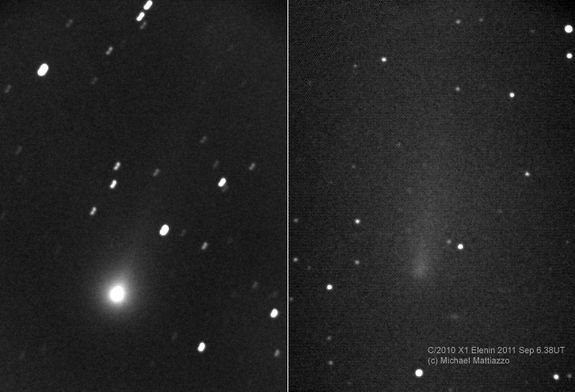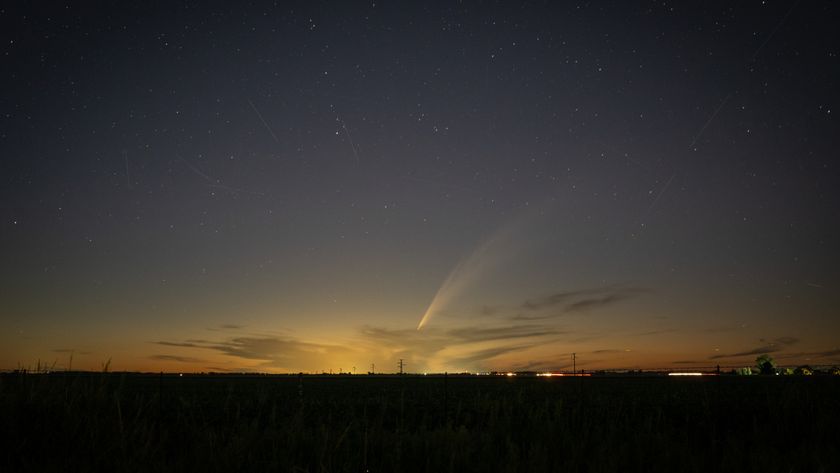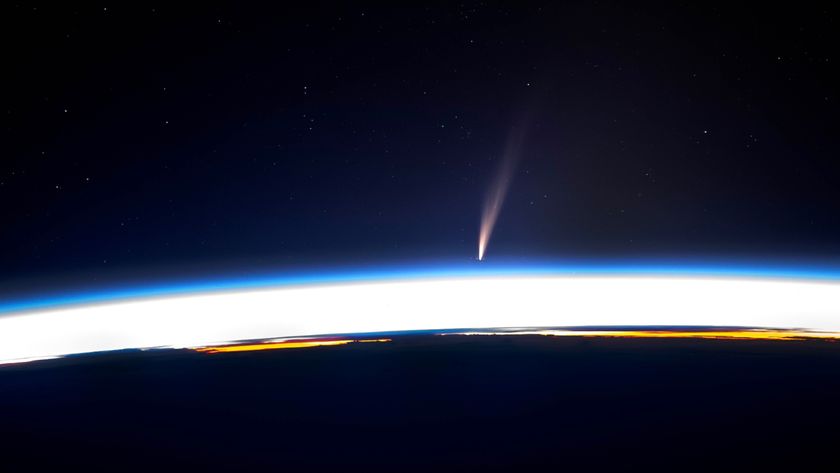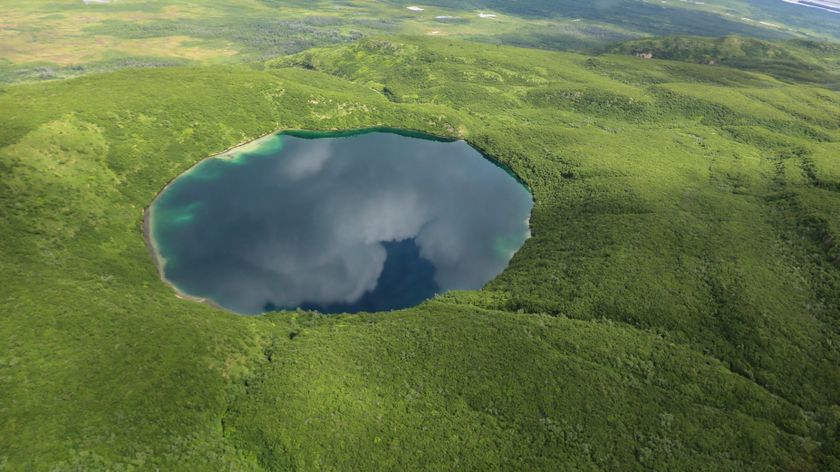
We can all breathe a sigh of relief: The so-called "doomsday comet" Elenin made its closest flyby of Earth Sunday (Oct. 16), and no cataclysms ensued.
Some skywatching soothsayers had predicted that Elenin's approach Sunday would trigger catastrophic earthquakes and tsunamis. Others had sounded even more dire alarms, suggesting that Elenin was not a comet at all but a rogue planet called Nibiru whose Earth encounter could usher in the apocalypse.
But none of that came to pass, as Elenin zipped by our planet at the safe remove of 22 million miles (35.4 million kilometers) and sped off into deep space. Or crumbs of the comet did, anyway. [Gallery: Comet Elenin in Pictures]
The comet began breaking up after getting hammered by a powerful solar storm in August, and a close pass by the sun on Sept. 10 apparently finished Elenin off, scientists say. So what cruised by Earth over the weekend was likely a stream of debris, not an intact comet.
"Now it's just a cloud of particles that will follow along in the comet's path and exit the solar system, and we won't see any of the particles for at least another 12 millenia," said astronomer Don Yeomans, of the Near-Earth Object Program Office at NASA's Jet Propulsion Laboratory in Pasadena, Calif.
A small, unremarkable comet
Comet Elenin was discovered in December 2010 by Russian amateur astronomer Leonid Elenin. The comet's core likely measured 2 to 3 miles (3 to 5 km) across before it broke up, scientists say.
Sign up for the Live Science daily newsletter now
Get the world’s most fascinating discoveries delivered straight to your inbox.
The apocalyptic rumor mill generated by Elenin's arrival on the skywatching scene was completely unwarranted, Yeomans said. The comet was far too small to influence Earth gravitationally, and it never posed a danger of hitting our planet.
About 2 percent of newly discovered comets disintegrate when making their closest approach to the sun, Yeomans added. So Elenin's demise was fairly unremarkable, just like the comet itself.
"It's just Mother Nature putting an end to another mediocre comet," Yeomans told SPACE.com.
Next armageddon is around the corner
Just a day after bidding farewell to Elenin's crumbs, Earth welcomed another fast-moving visitor to its neighborhood. The small asteroid 2009 TM8 zipped by our planet on Monday morning (Oct. 17), coming much closer than Elenin.
The schoolbus-size space rock passed with 212,000 miles (341,000 km) of Earth — just inside the orbit of the moon. Like Elenin, 2009 TM8 never posed a danger of striking us, astronomers said.
Though the propecies about Elenin failed to come true, the apocalyptically minded may not want to leave their bunkers just yet.
After all, Christian-radio broadcaster Harold Camping says the world will end on Oct. 21, which is this Friday. Using clues he prised from the Bible, Camping originally pegged the Rapture for May 21, 2011, but revised his prediction when that date came and went without apparent incident.
This story was provided by SPACE.com, sister site to LiveScience. You can follow SPACE.com senior writer Mike Wall on Twitter: @michaeldwall. Follow SPACE.com for the latest in space science and exploration news on Twitter @Spacedotcom and on Facebook.

Most Popular





